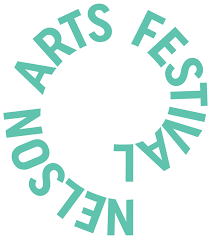Shostakovich: UNPACKED with Jian Liu
- New Zealand String Quartet

- Oct 21
- 4 min read
Updated: Nov 24

Welcome to
Shostakovich: UNPACKED
In this 50th year since the death of great Soviet-Russian composer Dmitri Dmitriyevich Shostakovich, we celebrate his life, struggles and profound contribution to the canon by programming 5 of his 15 string quartets, set in the company of some of his greatest other chamber music. Well-known for the hidden messages and codes inside his music due to the terrifying cat-and-mouse game he endured with Stalin, Shostakovich’s music expresses universal emotions and the power of the human spirit to endure.
In each concert, we collaborate with an exciting guest ensemble or musician, who join the NZSQ in exploring these masterpieces. We also showcase reflections on or reactions to Shostakovich’s music by a different New Zealand composer on each evening, giving the audience the chance to reflect on the power and relevance of Shostakovich’s music in today’s political and social climate.
Thank you for joining us on this journey.
New Zealand String Quartet Trust
PROGRAMME NOTES
Estella Wallace (2004—)
Of Sorrows for string quartet (2025) *World premiere
This piece has been generously supported by Hon. Christopher Finlayson.
Anyone who knows me knows that Shostakovich is my favourite composer. But Shostakovich's life story is one that always breaks my heart. I first discovered his work in high school when I studied his 5th symphony and since then I have been so fascinated by his work.
Of Sorrows is a reflection on Shostakovich’s final ever piece – his viola sonata. Fragments and themes are weaved throughout the work. But this is not only a reflection of his sonata, but also a life that he lived. The tension and sorrows.
by Estella Wallace
The Finlayson Prize
We’re proud to premiere this new piece of music by Estella Wallace, recipient of the Finlayson Prize for Composition. Developed in partnership with New Zealand School of Music - Te Kōkī (NZSM) and SOUNZ Centre for New Zealand Music, the prize invited composition students at NZSM to create new works inspired by or responding to the music of Dmitri Shostakovich.
The Finlayson Prize is generously sponsored by Hon. Christopher Finlayson, and includes prize money as well as a package of professional development opportunities. The prize aims to ensure that the new composition has a life beyond its premiere and to help strengthen the composer’s next steps in their career.
Dmitri Shostakovich (1906—1975)
Piano Quintet in G minor, Op. 57 (1940)
I. Prelude. Lento
II. Fugue. Adagio
III. Scherzo. Allegretto
IV. Intermezzo. Lento
V. Finale. Allegretto
Composed in 1940, Shostakovich’s Piano Quintet in G minor stands as one of his most admired chamber works. Written for the Beethoven Quartet, with the composer himself at the piano for its premiere, the work was an immediate triumph. It was awarded the Stalin Prize the year after composition, a rare example of official recognition for a work of such emotional depth.
The Quintet unfolds over five movements, blending Baroque-inspired counterpoint with Shostakovich’s modern, often ambiguous harmonic language. The opening Prelude is sombre and noble, setting the stage with stately chords from the piano and sustained string writing. It leads seamlessly into the Fugue, a movement of serene poise and extraordinary craftsmanship, in which each instrument enters in turn to build an atmosphere of quiet intensity.
The central Scherzo provides an exhilarating contrast, bursting with rhythmic vitality and sardonic wit. This is followed by the Intermezzo, a lyrical and deeply expressive slow movement. The Finale brings lightness and grace, with a set of elegant variations that lead the work to a subtle, understated conclusion rather than a grand flourish.
INTERVAL
15 minutes
Dmitri Shostakovich (1906—1975)
Sonata for Viola and Piano, Op. 147 (1975)
I. Moderato
II. Allegretto
III. Adagio
Fittingly, we close our 2025 Season celebrating Shostakovich’s chamber music with his very final creation, the Viola Sonata, completed on 5 July 1975, just one day before he was admitted to hospital, where he died five weeks later. It was premiered by and dedicated to Fyodor Druzhinin, violist of the Beethoven Quartet, the ensemble which premiered so many of his string quartets.
Shostakovich seems to have intended the Viola Sonata as a final farewell - each of the three movements ends with the term morendo or dying away and includes many of his own themes from earlier works, seeming to sum up his life. He also pays tribute to his most-beloved composers by including their themes. A critic for the Soviet newspaper, Izvestia, wrote that the sonata was “like the catharsis in a tragedy; life, struggle, overcoming, purification by light, exit into immortality.”
The first movement, described by Shostakovich as a “novella”, begins with unaccompanied pizzicato on the viola’s open strings, in homage to Alban Berg (in his violin concerto), before the piano enters with an eerie chromatic line, in clear contrast to the wide intervals just heard in the viola. Both voices wend the way through a forlorn landscape building to an impassioned climax and leading to a lamenting viola cadenza before subsiding back to the opening pizzicato.
The second movement, based on motives from his abandoned opera The Gamblers, is a sardonic scherzo – part folk dance, part march – at times savage and grotesque.
Shostakovich wrote the final movement in just two days, describing it as “an Adagio in memory of Beethoven” with the iconic arpeggios and main theme from the Moonlight Sonata floating in and out of the movement in a dream-like way. The “lonely voice” so often used in Shostakovich’s works, is heard in another heart-breaking viola cadenza. In this epic and pathos-filled movement, Shostakovich farewells his own works, quoting all 15 of his symphonies and his second violin concerto and just before the end, his Suite for two pianos written as a 16-year-old, dedicated to his father’s memory. The work ends on a pure and radiant C major chord.
The commentator, Malcolm MacDonald, observed that:
“Shostakovich was a pianist, not a string player. Yet he clearly valued above all that vocal quality in string instruments that allowed them to stand as surrogates for the composer’s personal voice in quartet, concerto, or sonata, evoking public debate or private soliloquy.”
by Gillian Ansell
ARTISTS ON STAGE
Gillian Ansell Violist, New Zealand String Quartet
Peter Clark Violinist, New Zealand String Quartet
Anna Van Der Zee Guest Violinist, New Zealand String Quartet
Andrew Joyce Guest Cellist, New Zealand String Quartet
Jian Liu Pianist
THANK YOU

New Zealand String Quartet - Te Rōpū Tūrū o Aotearoa






















Comments